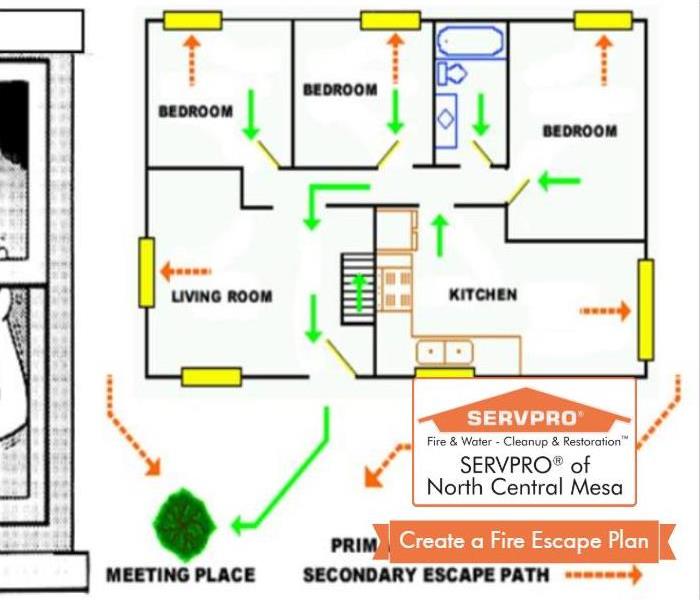Create a Fire Escape Plan for Your Home!
4/22/2019 (Permalink)
House fires created over $264 Million in direct property damage from 2012 to 2016. As bad as that is, property damage can be restored or replaced. In the same amount of time, an average of 80 deaths was caused annually by those fires. A life cannot be replaced. The best way to prevent a death from a house fire is to have a plan. When a fire does take place in your home, saving a few seconds of reaction time could make a big difference in helping to get your family or friends out of danger quickly and safely.
Here are some tips you can use to create an effective fire evacuation plan!
- Plan for everyone. Account for the special needs of everyone in your household, especially young children and elderly household members who may not be as mobile. Children don’t always wake up when a smoke alarm sounds. Make sure someone is assigned as an escape buddy for small children, then choose a backup person in case the assigned person is not present at the time of the fire.
- Identify two ways out of the structure. This could include windows and doors. Make sure each escape route open easily so everyone can get outside. and install emergency release mechanisms on all security bars on doors or windows.
- Involve the children in planning. Have your children help create the fire evacuation plan. Draw a map of the home, then have the children mark two exit routes and the locations of smoke detectors.
- Choose a meeting spot outside of the structure. Decide on a meeting place outside. It can be a neighbor’s house, mailbox or stop sign. It should be in front of the house so first responders are able to see you when they arrive. Make sure everyone knows not to go back into the house after you leave.
- Check smoke alarms. Check that smoke detectors are properly placed and working. The National Fire Protection Association (NFPA) recommends installing one in every sleeping room, outside each sleeping room and on each level of the home.
- Be visible. Make sure that your house number can be seen quickly from the street by first responders. You can put house numbers above the garage door, on a pillar next to the front door, or on the street curb directly in front of your house, for example.
- Respond immediately. Make sure everyone knows that if the smoke alarm sounds, they need to get out as quickly as possible.
- Always have a backup plan. If the planned exit routes are blocked by fire or fallen debris and it’s not possible to leave the house, close all doors between you and the fire. Place a towel, pillow, or something similar under the door and go to an exterior-facing window. Call the fire department to report your location.
- Share with everyone. Make sure the escape plan is readily accessible to guests as well. Go over the plan with everyone who lives in the house along with guests and overnight visitors.
- Practice your escape plan regularly. Practice and review the plan at least once per year.
With a well-thought-out plan in place, you can be one step ahead of the unexpected. You may not have the time or ability to think things through.






 24/7 Emergency Service
24/7 Emergency Service
